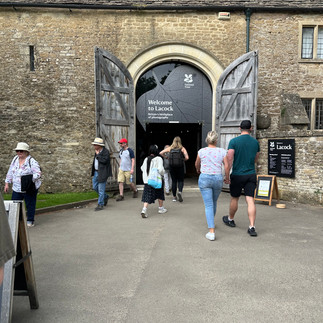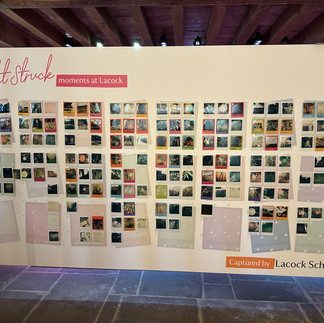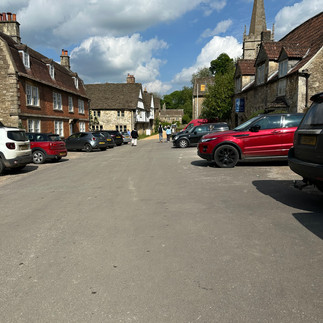Windows to the Past at Lacock Abbey
- Kennedy Funk
- May 19, 2024
- 2 min read
The Birthplace of Modern Photography
Some day trips are a journey in every sense of the word, and our visit to Lacock Abbey was no exception. It took what felt like forever to get there from Canterbury—trains, buses, and more waiting around than I’d like to admit. But the moment we arrived, all that travel faded into the background. Lacock Abbey welcomed us with its charm, history, and, most importantly, its breathtaking gardens.
The abbey itself is stunning, with its historic stone walls and serene surroundings. Before diving into the gardens, we spent some time in the museum, which offered a fascinating glimpse into the abbey’s past and its connection to photography. It was incredible to stand in a place so deeply tied to innovation and art—this was where Henry Fox Talbot, one of the pioneers of photography, lived and worked. As a photographer, being in the birthplace of the negative-positive photographic process felt like a pilgrimage.

Of course, the gardens stole the show. Lacock Abbey’s grounds are nothing short of enchanting. Winding paths led us through lush greenery, with flowers blooming in every direction. It felt like stepping into a painting, with each turn revealing a new burst of color or a hidden nook perfect for a quiet moment. I found myself pausing often, just to take it all in—the way the sunlight filtered through the trees, the buzzing of bees, and the gentle rustle of leaves in the breeze.
One of my favorite spots was the wildflower meadow. It was a little overgrown in the best way as if nature had decided to take over and create something effortlessly beautiful. Sitting there for a moment, I couldn’t help but feel a sense of peace. It was the kind of place where time slows down, and you’re reminded to breathe deeply and just be present.
The Latticed Window
Inside the abbey, we found THE latticed window—a seemingly simple feature with an extraordinary history. This unassuming window played a pivotal role in photography. It was through this very window that Fox Talbot captured his groundbreaking image, “Window in Lacock Abbey,” which is considered one of the earliest photographic negatives. Standing before it, I couldn’t help but marvel at how something so ordinary—a window—could be part of such a revolutionary moment in history.
The window itself is beautiful, with its delicate pattern of leaded glass panes framing the view beyond. It felt poetic, knowing that the same light streaming through those panes had been captured nearly two centuries ago. For a moment, I tried to imagine the scene as Talbot saw it—both the window and the potential it held, which he must have understood even then. As someone who loves photography, it felt like a full-circle moment, connecting my own passion to the roots of the art form.
After exploring the abbey and its rich history, we wandered the grounds a bit more before reluctantly heading back toward the buses and trains. The journey home was long, just like the one there, but the memories of Lacock Abbey made every minute worth it. It’s a place that feels frozen in time, yet alive with history and beauty, and I’m so grateful I got to experience it.













Comments